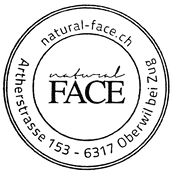Sclerotherapy for spider veins
Find out more about foam sclerotherapy treatment for small varicose veins.
Sclerotherapy for spider veins (foam sclerotherapy to treat small varicose veins)
Small varicose veins (known as “spider veins”) can be removed using sclerotherapy.
Sclerotherapy is used to treat surface-level varicose veins (also called “spider veins”). It works by atrophying and closing up the varicose veins.
Sclerotherapy involves injecting a small amount of a substance called Aethoxysklerol, which irritates the wall of the blood vessel, into the affected vein using a very thin needle (I use “The Invisible Needle”).
This causes the walls of the vein to stick together, leading to resorption of the vein.
Painless treatment.
Foam sclerotherapy treatment is not painful.
You may experience a minor burning sensation at the point of injection.
Hardening or haematoma (bruising) may occasionally occur following the treatment.
These side effects are completely harmless and disappear within a few weeks.
Allergic reactions and other skin reactions to the sclerotherapy treatment are uncommon.
Necrosis is an extremely rare side effect.
Foam sclerotherapy: the new, modern form of sclerotherapy
Foam sclerotherapy is the modern form of sclerotherapy.
A long-established liquid sclerosing agent is mixed with a defined quantity of sterile air to form a foam.
This foam is injected into the spider veins using an ultra-thin needle.
The foam expels the blood and immediately sticks the walls of the blood vessel together.
Unlike conventional treatments using liquid sclerosing agents, the foam is not thinned by the blood, meaning it does not end up in the deep vein system.
As a result, comparatively low concentrations and quantities of sclerosing foam can have a more powerful effect than liquid sclerosing agents, along with fewer side effects. This makes the treatment both safer and more effective.
Foam sclerotherapy therefore has very few side effects and is much more efficient. The number of treatments that can be carried out in one session is limited by the amount of the necessary sclerosing agent that can be tolerated by the body.
A pre-treatment consultation to assess, advise and plan treatment is therefore essential.
Address
natural-face
Artherstrasse 153
6317 Oberwil b. Zug
Legal


